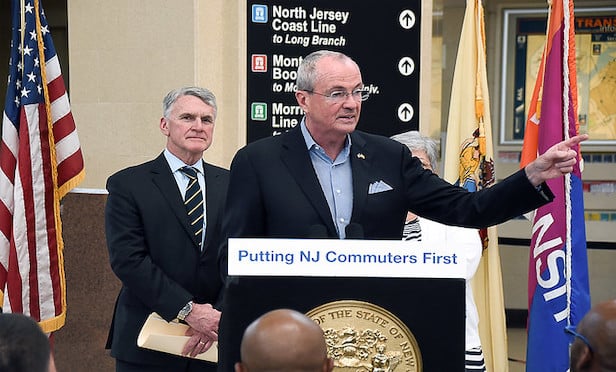 New Jersey Gov. Phil Murphy and NJ TRANSIT President and CEO Kevin Corbett (left).
New Jersey Gov. Phil Murphy and NJ TRANSIT President and CEO Kevin Corbett (left).
TRENTON, NJ—New Jersey Gov. Phil Murphy announced over the weekend he signed a new Executive Order that imposes additional mitigation measures on NJ TRANSIT that limits by 50% the stated maximum vehicle capacity on all trains, buses and light rail lines in order to limit the spread of COVID-19.
The new Executive Order requires NJ TRANSIT workers and customers to wear cloth face coverings while on trains, buses and light rail vehicles except where doing so would inhibit that individual's health or where the individual is under two years of age, and require workers to wear gloves when in contact with customers.
"We must continue our commitment to do everything we can to flatten the curve and defeat this virus," said Gov. Murphy. "With these additional requirements, we are aggressively reducing the spread of the virus to protect New Jersey residents."
The governor's Executive Order No. 125, which goes into effect at 8 a.m. today, also requires NJ TRANSIT at its expense, to provide face coverings and gloves for their workers, to the extent supplies are available. If a customer refuses to wear a cloth face covering for non-medical reasons, then NJ TRANSIT workers may decline entry to the individual.
NJ TRANSIT President and CEO Kevin Corbett added, "Our bus, train, light rail and Access Link para-transit service is vital to ensuring essential personnel can continue to get to their jobs and back home again, and Governor Murphy's executive order strengthens the tools we have to do this as safely as possible during the COVID-19 pandemic."
The Executive Order also covers new requirements for restaurants, cafeterias, food courts, bars, etc. that are still permitted to operate. Some of those new requirements include limiting occupancy at 10% of the stated maximum capacity; ensuring six feet of distance between workers and customers, except at the moment of payment and/or exchange of goods; arranging for contactless pay, pickup, and/or delivery options wherever feasible; lace conspicuous signage at entrances and throughout the food business, if applicable, alerting staff and customers to the required six feet of physical distance and requiring workers to wear cloth face coverings and gloves while on the premises, except where doing so would inhibit that worker's health, and require workers to wear gloves when in contact with customers or goods. Businesses must also provide, at their expense, such face coverings and gloves for their employees.
© Touchpoint Markets, All Rights Reserved. Request academic re-use from www.copyright.com. All other uses, submit a request to [email protected]. For more inforrmation visit Asset & Logo Licensing.







